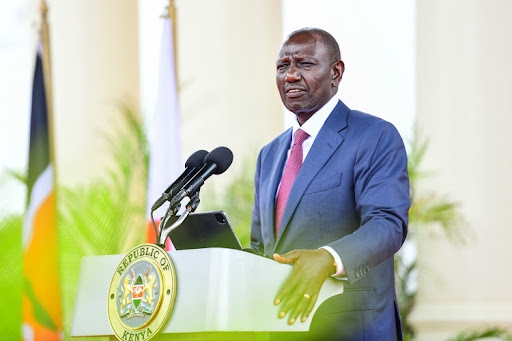Top banks in Kenya defied waves in the global financial market to increase their primary funding while just above half of their continental peer recorded significant drops.
According to the latest report rating banks in Africa by the Banker, top lenders in the country gain in the top 100 banks ranking, with Cooperative Bank slipping into top 30 category to join Equity and KCB Group.
According to the annual ranking for 2023 released last week, Co-op Bank improved six places to rank position 30, having grown it's Tier I capital by 6.3 per cent to $753 million or Sh110.7 billion.
Tier 1 capital consists of shareholders' equity and retained earnings, which are disclosed on their financial statements. It is a primary indicator used to measure a bank's financial health.
Co-op Bank has had good tidings in the past and current financial years, recently dethroning KCB Group as the second most traded counter at the Nairobi Securities Exchange (NSE).
The lender's total market capitalization closed September at Sh70 billion, opening a solid Sh4 billion gap against KCB, the leading bank in Kenya in terms of total assets.
Although the Banker's top 100 ranking did not give reasons for Co-op Bank's stability, analysts told the Star that the lender is reaping dividends for its association with the cooperative movement in the country.
"Apart from the bank's broad growth strategy developed in 2019 to grow an asset base, the lender is reaping big from its association with 15 million Sacco members," IDX Capital financial analyst Carol Kemunto said.
The cooperative society movement is getting stronger in the country, with top Saccos hitting over Sh500 billion in assets.
Equity Bank Group which recorded the highest Tier 1 capital growth of 19.7 per cent was ranked the most steadfast bank in the country, gaining marginally to rank position 20 in the continent.
The report shows, Equity Bank's Tier 1 capital rose by 19 per cent to $1.44 billion (Sh210 billion) in the financial year ended December 31, 2022.
Other local lenders that made it to the top 100 list includes KCB, NCBA and DTB Bank.
KCB Group recorded a slight growth of 1.89 per cent in Tier 1 capital to retain its ranking at position 21.
It out did Equity Bank in terms of assets capital to retain its position as the biggest lender in the country.
The bank recorded a 54 per cent growth in total assets to Sh1.86 trillion in the first half of the year ending June 30, 2023, despite net profit closed at Sh16.1 billion.
In overall, the report notes that the return to profitability witnessed in the previous ranking continues, as the impact of the Covid-19 pandemic continues to ease.
"Although close to 70 per cent of this year’s top 100 registered an increase in pre-tax profits for the year, the weak currency has severely affected asset and capital bases, with just under half of lenders in the 2023 ranking experiencing a drop in Tier 1 capital in dollar terms for 2022," reads the report.
South Africa’s Standard Bank, FirstRand and Absa Group, which retain their positions as Africa’s three biggest lenders, all saw a decline in Tier 1 capital positions, with only Absa recording a slight increase in assets in dollar terms.
Another South African lender, Nedbank, which fell to fifth place in the continent two years ago, rose once again to fourth position for 2022, eking out a gain of 0.6 per cent in its Tier 1 capital position.
Nedbank’s rise came at the expense of National Bank of Egypt, which, together with fellow state-owned lender Banque Misr, were omitted from this year’s ranking, after failing to publish or provide audited end-of-year data for 2022 at time of reporting
After several years of double-digit growth, Egyptian lenders suffered a sharp reverse in 2022 on the back of a deepening financial crisis, which has seen the value of the Egyptian pound plummet by 50 per cent since early 2022.
While the report has projected contained growth for big banks in the continent, it sees high interest rates and weak currencies as top challenges.
In Kenya, although the Central Bank of Kenya (CBK) recently retained the base lending rate at 10.5 per cent, average lending rate is said to have increased to close to 15 per cent and a high of 22 per cent for riskiest borrowers.
High lending rate and weak shilling that has plummeted close to 20 per cent in a year have fueled loan defaults, with CBK putting gross non performing loan at 15 per cent, highest in close 20 years.













